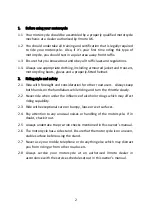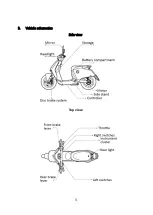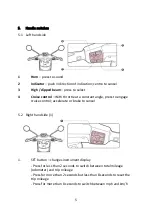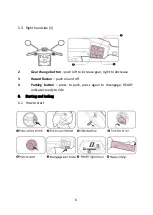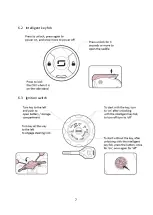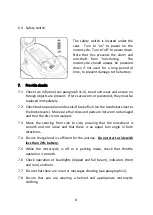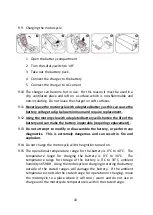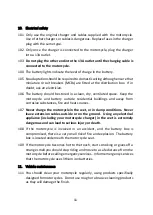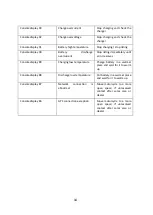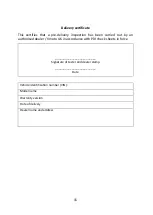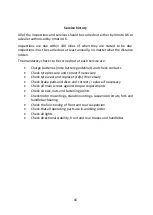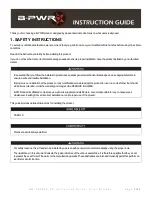
11
10.
Electrical safety
10.1
Only use the original charger and cables supplied with the motorcycle.
Use of other chargers or cables is dangerous. Replace fuses in the charger
plug with the same type.
10.2
Only once the charger is connected to the motorcycle, plug the charger
into a 13A outlet.
10.3
Do not plug the other end into the 13A outlet until the charging cable is
connected to the motorcycle.
10.4
The battery lights indicate the level of charge in the battery.
10.5
No adaptation should be required to domestic wiring although ensure that
miniature circuit breakers (MCBs) are fitted at the distribution box. If in
doubt, ask an electrician.
10.6
The battery should be stored in a clean, dry, ventilated space. Keep the
motorcycle and battery outside residential buildings and away from
corrosive substances, fire and heat sources.
10.7
Never charge the motorcycle in the wet, or in damp conditions. Never
leave extension cables outside or on the ground. Using any electrical
appliance (including your motorcycle charger) in the wet is extremely
dangerous and can lead to serious injury or death.
10.8
If the motorcycle is involved in an accident, and the battery box is
compromised, there is a very small risk of fire and explosion. The battery
box is located underneath the motorcycle seat.
10.9
If the motorcycle becomes hot to the touch, starts smoking or gives off a
strange smell you should stop riding and move to a safe distance from the
motorcycle before calling emergency services. Inform emergency services
that the motorcycle uses lithium ion batteries.
11.
Vehicle maintenance
11.1
You should clean your motorcycle regularly, using products specifically
designed for motorcycles. Do not use rough or abrasive cleaning products
as they will damage the finish.



